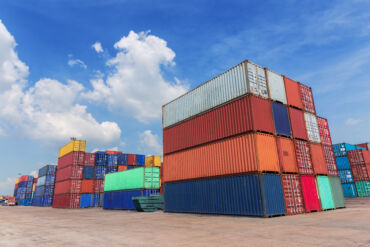The renegotiation of the trade treaty between the United States, Mexico, and Canada creates opportunities and redesigns the "exemplary treaty" into an innovative one.
We will analyze the USMCA’s rules of origin and how they impact key industries — automotive, steel, chemicals, and textiles. It’s important to note that an international treaty does not assume all products traded between parties are tax-free, but that free trade will be granted for products originating in the region that comply with specific terms and rules of origin.
These rules are based on the percentage of regional content in the products, the use of components produced in the region, or a change in the classification of goods (as when raw materials are processed into new products.)
The USMCA gives us rules of origin very similar to the North American Free Trade Agreement (NAFTA) that it replaces — and it continues to ensure a free flow of tax in North America by incentivizing the region not to assemble vehicles in, or use components from, other regions such as Asia.
For more on this subject, join us for a one-hour webinar, What to Expect in USMCA’s New Origin Rules, at 2 pm, EDT on June 4.
The recent renegotiation focused on the most impacted industrial sectors, which are heavily responsible for the economy of the three countries.
Automotive
It’s no surprise that a majority of the negotiations focused on the automotive sector, given that the production of components and the assembly of vehicles require collaboration across the region. Tensions arose with regard to the amount of regional content, components, and assembly required, and demands over working conditions in Mexico.
Specifically, USMCA’s rules of origin require 75% regional content, compared with NAFTA’s 62.5%. This increase must be formally achieved three years after the agreement enters into force, which gives auto companies time to phase in the requirements. As an important addition to these measures, the steel used in the production of cars and trucks must also have 70% regional content.
A USMCA measure that leaves Mexico at a disadvantage is the provision that 40% of cars and 45% of trucks must be manufactured by workers who earn at least $16 per hour. In Mexico, auto worker wages currently are $3.60 to $3.90 per hour, so this rule largely eliminates Mexico as a source of cheap labor in the automotive industry. Automakers will have to take this into account as they decide where to locate production, how to redesign their supply chains, and how to compare the value of free trade with cheaper labor.
The new rules also include a commitment to establish stricter requirements for the importation of small parts or components brought in from Asia, which at least returns some potential advantage to Mexico.
Steel
The rules of origin for the manufacture of televisions and other electronics were updated to accommodate current technologies and technical language.
Some inoperative compliance options were eliminated, and it was established that 65% to 75% of the steel used in certain steel-intensive products (cars, washing machines, furniture, stoves, etc.) would originate in the region. This requirement is being phased in over the next two to five years, depending on the product.
Chemical
In the chemical industry, the rules were modernized to introduce new compliance alternatives that recognize various chemical processes that transform materials: chemical reaction, particle size change, isomer separation, and purification.
The chemical industries in Mexico, the United States, and Canada took a unified stance to push for changes that make the rules of origin simpler and more flexible. Under NAFTA, the rules of origin for the chemical sector were defined by the method of tariff shift (change of heading) or with a content-value methodology.
Textiles
Under the USMCA, sewing yarn, pocket fabric, and elastics contained in a garment are required to originate in the countries of the region. For finished textile goods, coated fabrics (plastic) are also required to originate in the region. This provision may lead to the establishment of new domestic suppliers given that these materials are commonly imported from Asian countries.
Among other changes in the textile sector, it was established that the coverage of the provisions for textile folk goods (crafts) is extended in order to incorporate indigenous-produced goods into preferential tariff treatment. It also expands the coverage of checks to detect customs crimes, and establishes a textile committee to facilitate consultations and greater cooperation between the authorities.
These new sector-specific implementations show the three nations’ interest in growing their economies, increasing cooperation, and making regulations compatible with today’s technology, environmental concerns, and equitable labor standards.
The negotiators adapted to market demands and industry recommendations, although the revisions will benefit some parties more than others. Further, they may change the leadership role each country will assume within each market sector.









